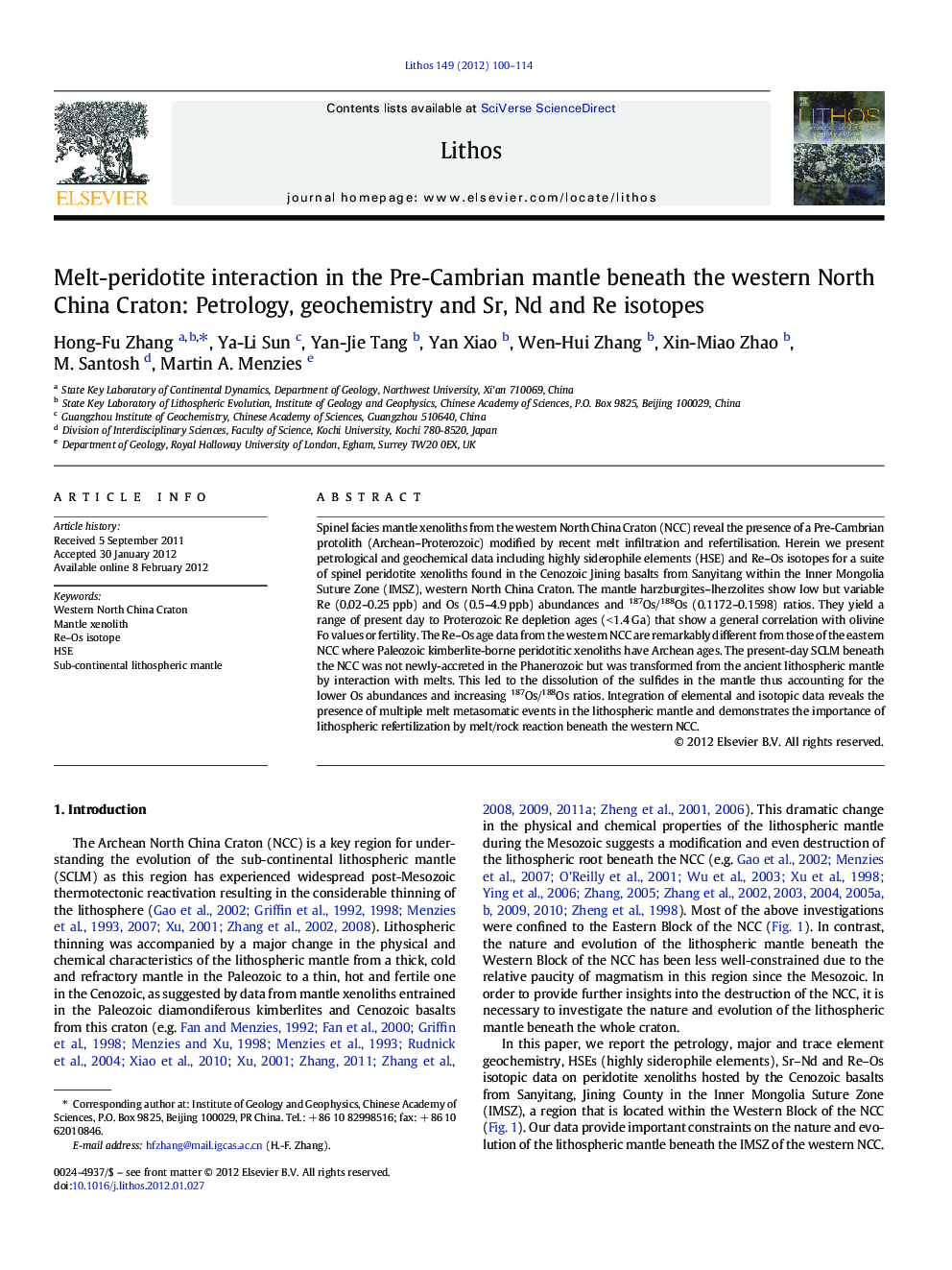| Article ID | Journal | Published Year | Pages | File Type |
|---|---|---|---|---|
| 4716581 | Lithos | 2012 | 15 Pages |
Spinel facies mantle xenoliths from the western North China Craton (NCC) reveal the presence of a Pre-Cambrian protolith (Archean–Proterozoic) modified by recent melt infiltration and refertilisation. Herein we present petrological and geochemical data including highly siderophile elements (HSE) and Re–Os isotopes for a suite of spinel peridotite xenoliths found in the Cenozoic Jining basalts from Sanyitang within the Inner Mongolia Suture Zone (IMSZ), western North China Craton. The mantle harzburgites–lherzolites show low but variable Re (0.02–0.25 ppb) and Os (0.5–4.9 ppb) abundances and 187Os/188Os (0.1172–0.1598) ratios. They yield a range of present day to Proterozoic Re depletion ages (< 1.4 Ga) that show a general correlation with olivine Fo values or fertility. The Re–Os age data from the western NCC are remarkably different from those of the eastern NCC where Paleozoic kimberlite-borne peridotitic xenoliths have Archean ages. The present-day SCLM beneath the NCC was not newly-accreted in the Phanerozoic but was transformed from the ancient lithospheric mantle by interaction with melts. This led to the dissolution of the sulfides in the mantle thus accounting for the lower Os abundances and increasing 187Os/188Os ratios. Integration of elemental and isotopic data reveals the presence of multiple melt metasomatic events in the lithospheric mantle and demonstrates the importance of lithospheric refertilization by melt/rock reaction beneath the western NCC.
Graphical abstractFigure optionsDownload full-size imageDownload as PowerPoint slideHighlights► Sanyitang xenoliths underwent ancient partial melting and recent metasomatism. ► Low Os contents and high Os ratios demonstrate its mobility during metasomatism. ► Lithospheric transformation through melt-peridotite interaction widespread.
